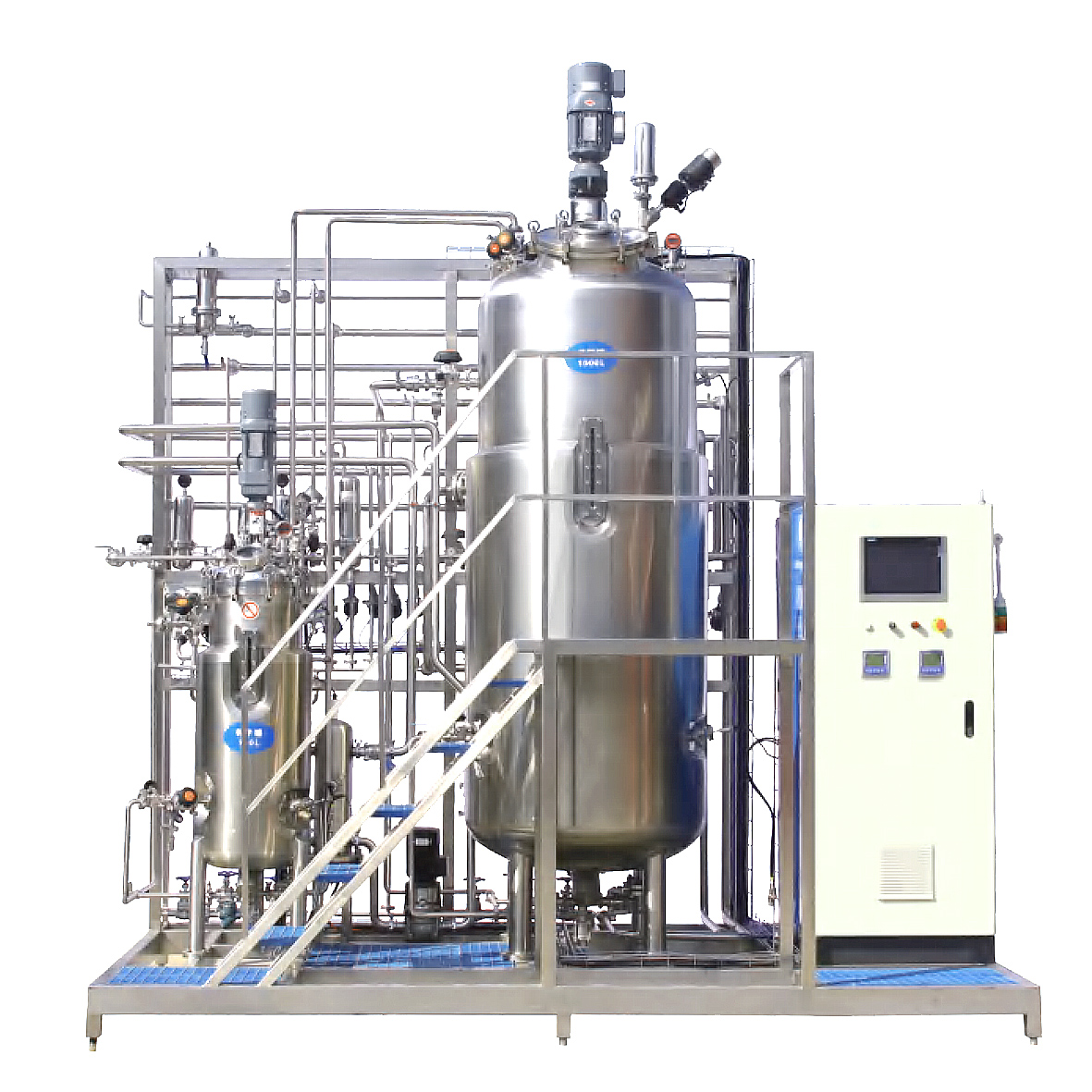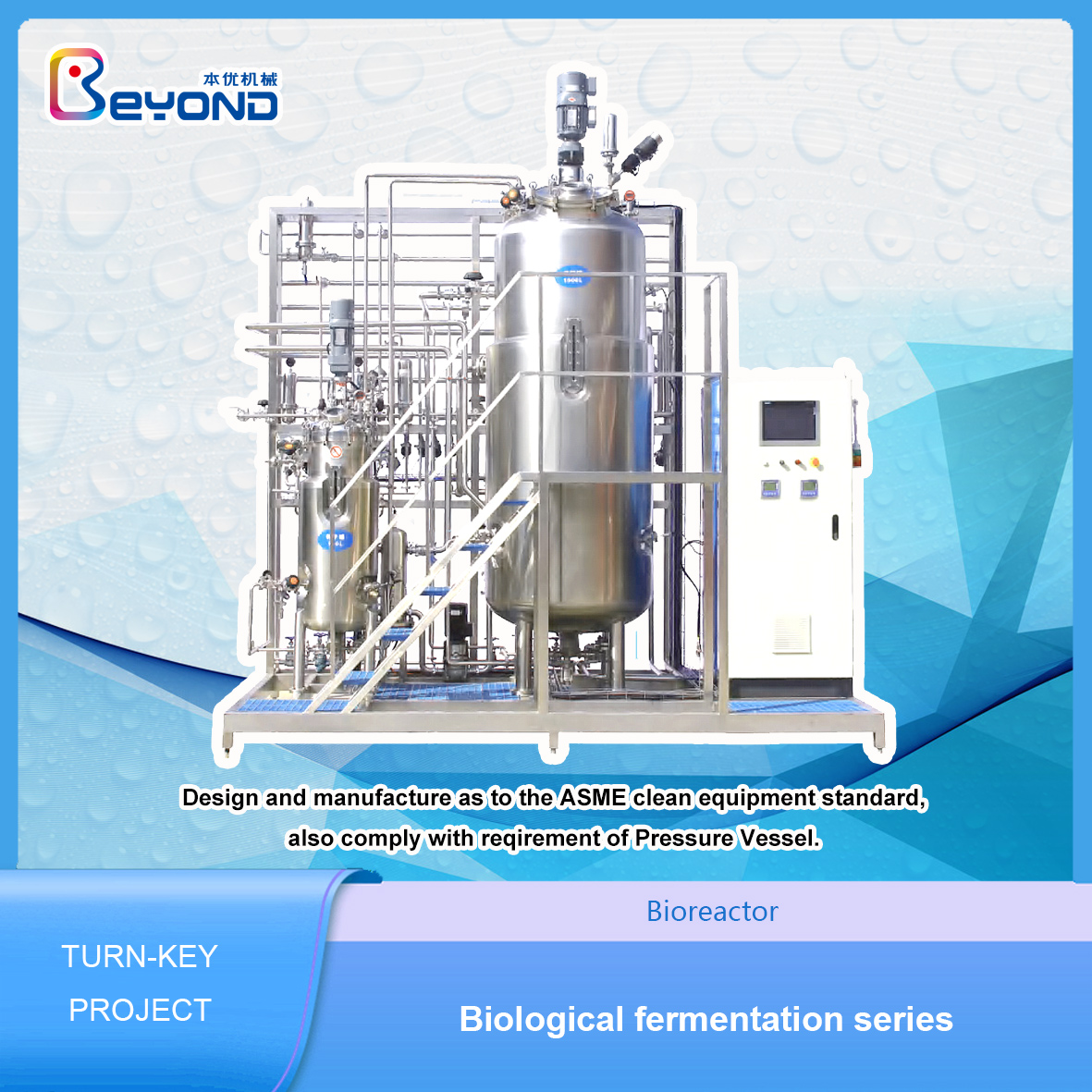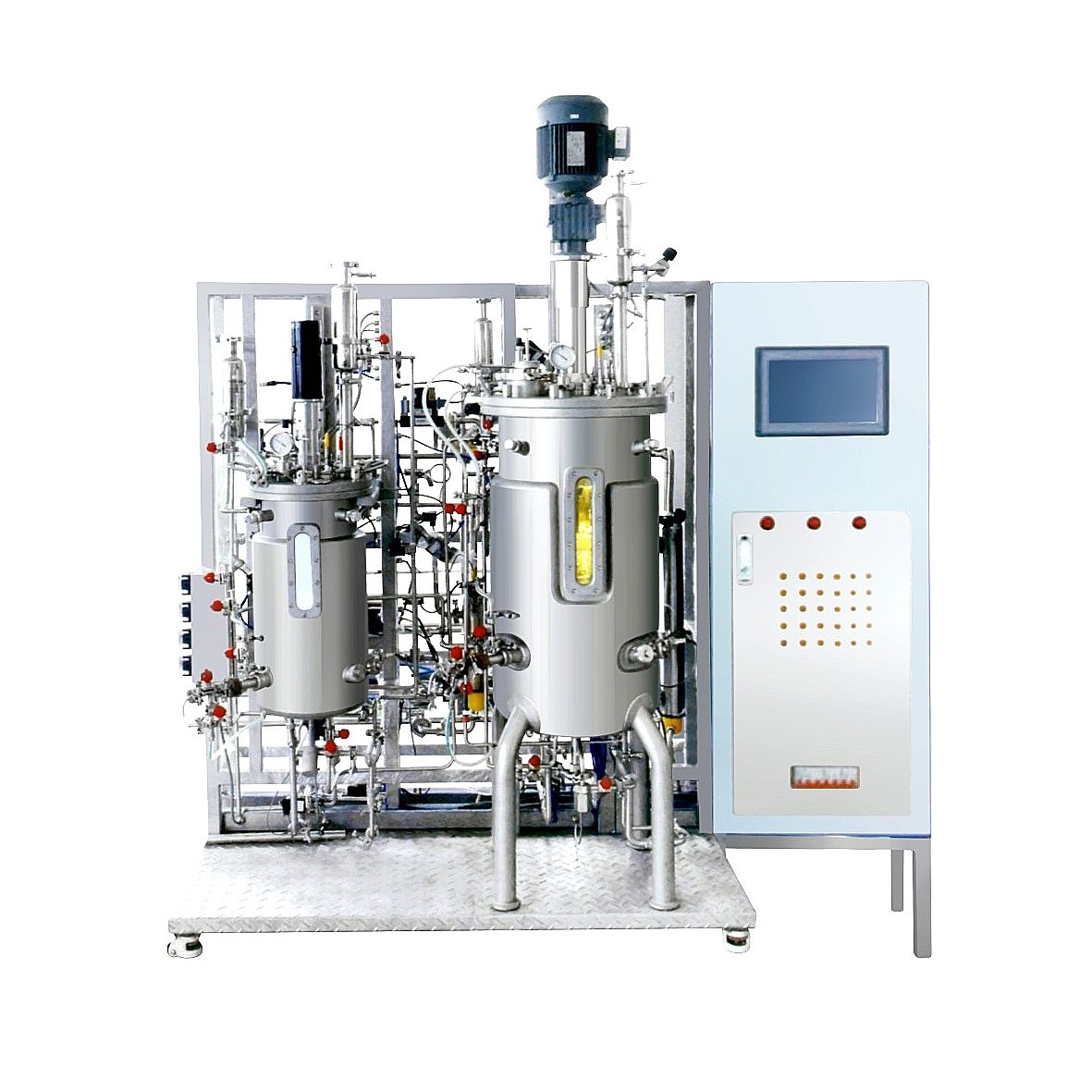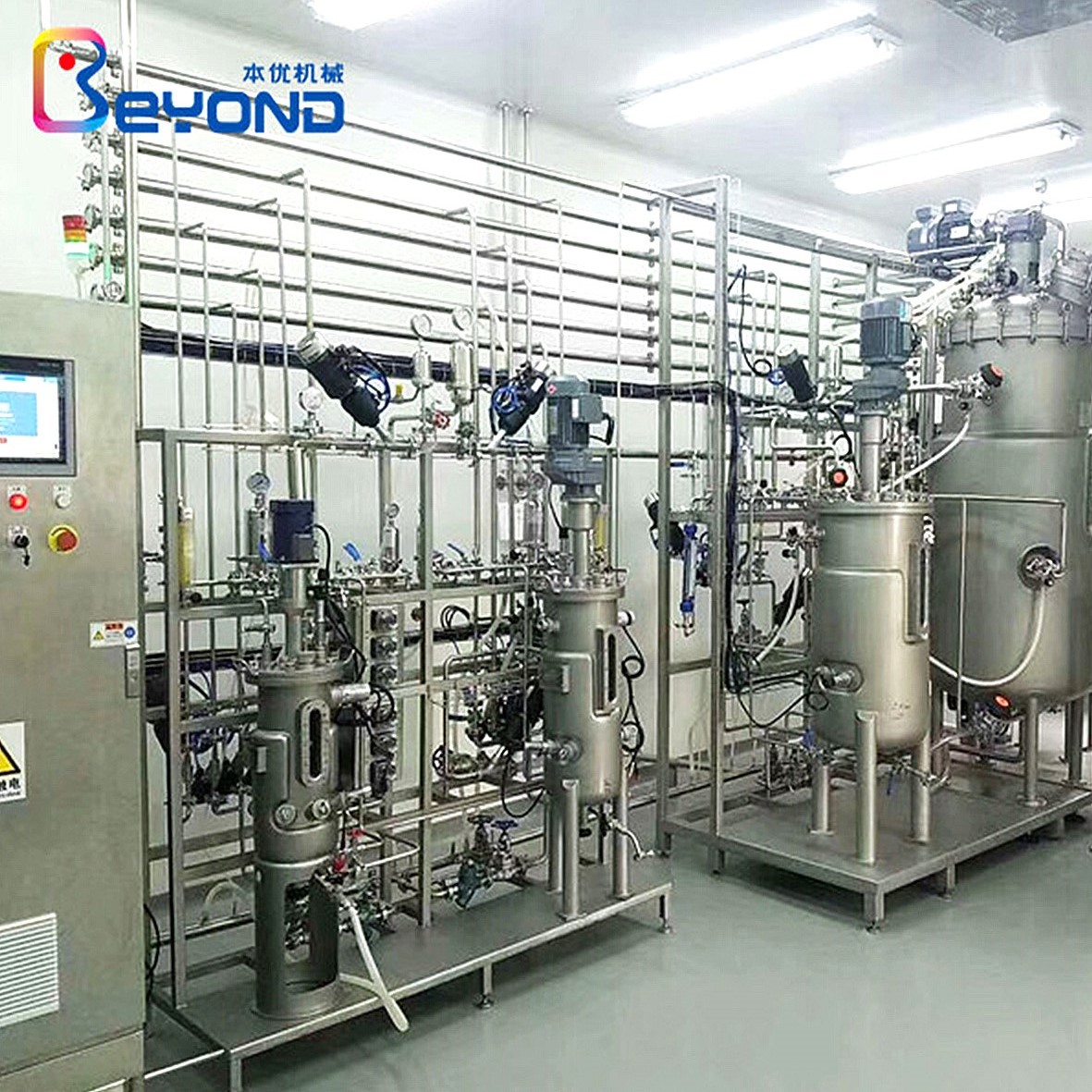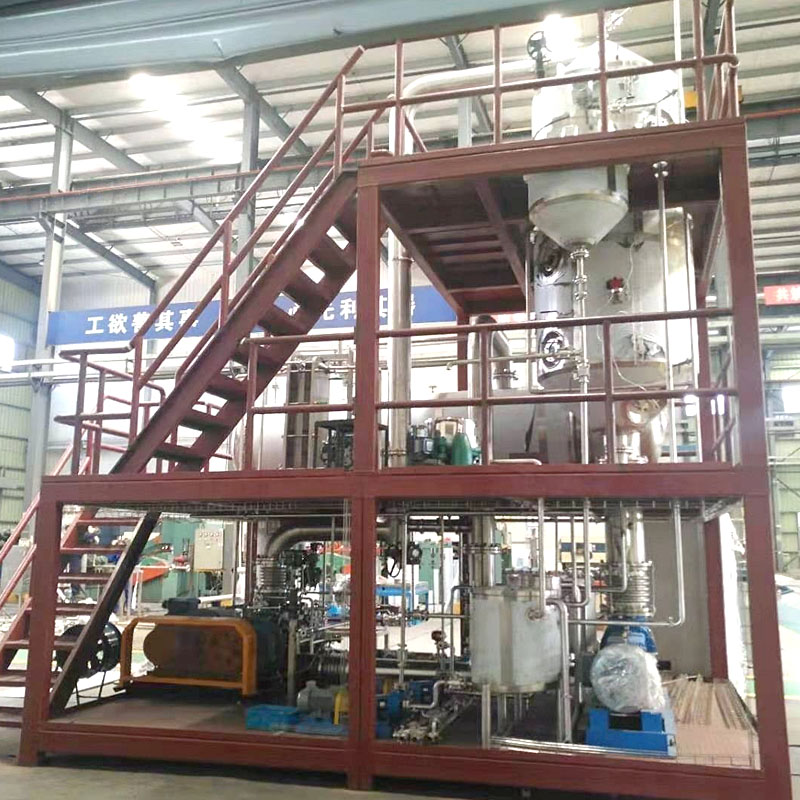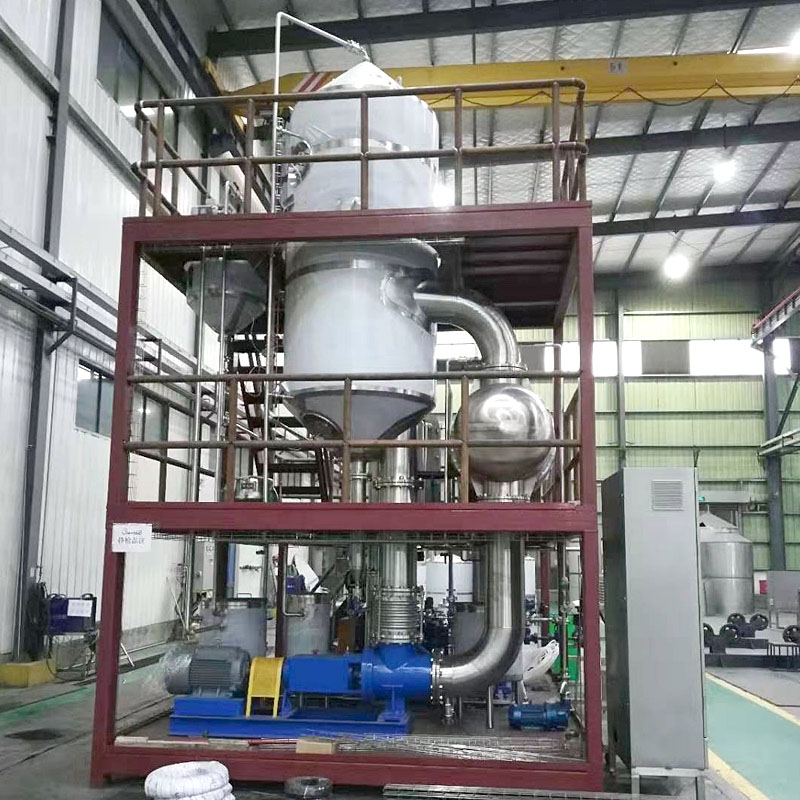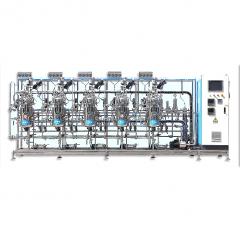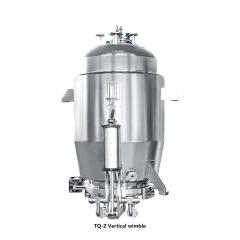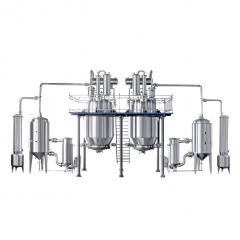
A bioreactor is a device used to cultivate and maintain organisms (such as cells, tissues, or microorganisms) to undergo biochemical reactions under controlled conditions. It provides a favorable environment, including appropriate temperature, pH value, oxygen concentration, nutrients, etc., to promote and optimize the progress of biological reactions.
A bioreactor typically consists of a container and a control system. A container is a sealed environment that can accommodate organisms and culture media. It usually has a stirring device to ensure uniform mixing of the culture medium and the organism, and to provide an oxygen supply. The control system can monitor and adjust various parameters in the reactor, such as temperature, pH value, gas flow rate, etc., to ensure optimal growth conditions and product yield.
Bioreactors are widely used in fields such as bioengineering, medicine, food science, and environmental science. They can be used for the production of proteins, antibiotics, fermentation products, biofuels and other biological products, as well as for research in cell culture and tissue engineering.
Common types of bioreactors include batch reactors, continuous flow reactors, and gas-phase fermentation reactors. Choosing the type of bioreactor suitable for a specific application depends on the required reaction process and product requirements.
Highlights of the product:
Flexibility: Bioreactors can be customized and adjusted according to specific application requirements. They can adapt to different reaction types, volume sizes, operating modes, and control parameters, making them suitable for a wide range of biological manufacturing processes.
Automation and precise control: The bioreactor is equipped with advanced automation systems, which can achieve real-time monitoring, data recording, and process control. This precise control can ensure the optimal biological reaction conditions and the highest production efficiency.
Process optimization and scalability: By optimizing the control parameters inside the reactor, the bioreactor can improve product quality and yield, and optimize energy and resource utilization efficiency. In addition, the scalability of the reactor enables it to meet different scale requirements from research and development to commercial production.
Visual monitoring and maintenance: The bioreactor is designed with transparent walls or sensors to observe and monitor the reaction process. This visual monitoring can timely identify potential problems and take corresponding maintenance measures, thereby improving the stability and reliability of the reactor.
Enhancing biosafety: Focusing on biosafety can effectively prevent pollution and cross infection. The reactor design takes into account cooling systems, filtration devices, and aseptic technology to ensure a high-quality production environment.
Sustainable development: Bioreactors adopt green and sustainable processes and technologies. This includes utilizing renewable energy, recycling waste, and optimizing production methods to reduce negative environmental impacts and achieve sustainable production models.
Product performance parameters
Process types
Microbial fermentation,antibiotic fermentation,nucleic acid fermentation,enzyme fermentation,yeast fermentation,starter fermentation.
Fermentation types
Oxidation fermentation,facultative fermentation,anaerobic fermentation.
Material types
Liquid state fermentation,semi-liquid state fermentation,solid fermentation.
Coefficient of charge
70~75%
Ventilation ratio
1~2vvm
Height-diameter ratio
2~2.5
Culture medium sterilizing type
Actual sterilization,continuous sterilization,UHT continuous sterilization,etc.
Culture types
fungus,bacterium,actinomyces.
Culture expanding types
Single tank fermentation;multi-stage fermentation,disk-type fermentation.
Tank series
10L,20L,30L,50L,100L,200L,300L,500L,1m³,2m³,3m³,5m³,10m³,20m³,30m³,50m³,80m³,100m³,customized.
Design and manufacture as to the ASME clean equipment standard,also comply with reqirement of Pressure Vessel.
Inner surface treatment
Mechanical polishing Ra<0.4μm,and then mirror treatment.
Outer surface treatment
Mechanical polishing Ra<0.6μm,and then matt treatment.
No blind corner treatment
The inner welding line and the inner surface being polished,and accessories adopting the full length welding,and then polishing,inner coil pipe using the stress eliminating structure.
Fastener structure
All fasteners using the bolt stud balancing double acorn nuts,PTFE material as gasket seal.
Mechanical seal
Using the washable,sterilized collection plate equipped mechanical seal fixed and moving ring friction sleeve,to keep the friction debris from following into the tank,seal type:dry or wet type,single side or dual seal.
Heat exchange types
Full jacket,dimple jacket,semicircle-pipe jacket,inner coil,inner tubulation.
Mixing types
Turbine stirring,wide blade stirring,paddle stirring,deflector stirring,etc.
Reducer motor
RF helical gear,FAF parallel shaft helical gear,SAF turbine helical gear,two stage energy efficiency variable frequency motor.
Piping System
Process piping
It adops ASME sanitary grade internal and external polished clean pipe.It is welded automatically with argon gas,endoscope inspection.
Double membrance diaphragm type tank bottom valve at the product outlet to sterilize before sampling.
Online sterilization
Adopting the clean and saturated steam which is filtered by 0.5um titanium rod filter.
Sampling methods
Adopting the diaphragm type aseptic sampling valve,to do the on-line sterilization,and take aseptic sample.
Inoculation methods
Flame ring type,differential pressure type.
Subcultivation
The pipes can be sterilized during the whole progress,the thermometer on which to detecting the sterilization.
Subcultivation
Peristaltic pump,measuring cup,etc.
Multi-stage culture expanding system subcultivation
Subcultivation distributor to do the multitubes distribution
Subcultivation,diaphragm valve combination.
Subcultivation valve manifolds subcultivation,etc.
In summary, bioreactors are an important tool that can provide a controlled environment, support biological reactions, and promote product production and research.

